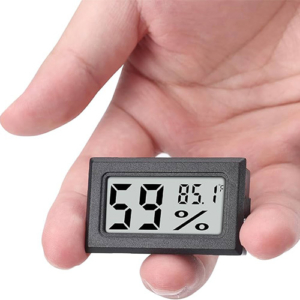Mastering Indoor Comfort: A Comprehensive Guide to Humidity Control in HVAC Systems

Why Humidity Matters in HVAC Systems
Humidity plays a major role in indoor comfort and health. It’s not just about how warm or cool the air feels—it’s about the moisture in the air, too. That’s why HVAC systems are designed to manage both temperature and humidity.
The key metric? Relative Humidity (RH)—a percentage that shows how much moisture is in the air compared to how much it could hold at that temperature. Ideal RH levels for most indoor spaces fall between 30% and 50%.
The Impact of Improper Humidity Levels
When humidity isn’t balanced, you’ll notice.
Too Much Humidity?
-
Feels hotter and stickier than it really is
-
Triggers mold and mildew growth
-
Worsens indoor air quality
-
Makes cooling less effective
Too Little Humidity?
-
Causes dry skin, irritated eyes, and respiratory issues
-
Feels colder than the actual temperature
-
Can damage wood furniture, floors, and musical instruments
How HVAC Systems Control Humidity
Modern HVAC systems are built with humidity control in mind. Here’s how they do it:
-
Central AC Systems: Cool air and remove moisture as it condenses on evaporator coils
-
VRF Systems: Offer precise control of temperature and humidity in individual zones
-
Dehumidifiers and Humidifiers: Add or remove moisture to help maintain healthy RH levels
Critical components like evaporator coils, drain pans, and humidity sensors work behind the scenes to keep your indoor environment balanced and comfortable.
Humidity Control Strategies
Maintaining ideal humidity involves a combination of technology, maintenance, and monitoring.
Dehumidification Methods
-
Refrigerant-based systems: Cool air to condense moisture
-
Desiccant dehumidifiers: Absorb water using materials like silica gel
Humidification Solutions
-
Evaporative humidifiers: Add moisture using water vapor
-
Steam vaporizers: Release steam for fast, controlled humidity boosts
Both systems should be selected based on your space, climate, and air quality needs.
Regular Maintenance: The Key to Humidity Control
Even the best HVAC systems need regular upkeep to work well.
What to Watch For:
-
Condensation on windows
-
Musty odors
-
Dry skin or static shock
-
Dust buildup around vents
Simple Maintenance Tips:
-
Change filters monthly
-
Check for leaks or blockages
-
Clean and inspect vents
-
Use a hygrometer to monitor humidity
-
Adjust your smart thermostat settings seasonally
Routine care keeps systems efficient and your air healthy.
Final Takeaway
Humidity control is more than a comfort issue—it’s essential to maintaining a healthy, long-lasting living space. With the right HVAC setup, regular maintenance, and tools like smart thermostats, you can:
-
Improve air quality
-
Prevent damage to your home and belongings
-
Boost energy efficiency
-
Protect your health
Whether you’re cooling a humid summer day or adding moisture during a dry winter, understanding humidity is the first step to better indoor living.

 Jacobs and Rhodes
Jacobs and Rhodes Jacobs and Rhodes
Jacobs and Rhodes